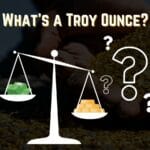Converting between kilograms and troy ounces is essential when dealing with precious metals. This comprehensive guide provides clear explanations, practical examples, and answers to frequently asked questions to help you master this crucial conversion.
Understanding the Units
Before diving into the conversion process, let’s clarify the units involved.
The Troy Ounce (oz t)
Unlike the standard avoirdupois ounce used for everyday items, the troy ounce is specifically designated for precious metals. A troy ounce is heavier, equaling approximately 31.1034768 grams. This historical unit, potentially originating from the medieval French town of Troyes, has become the standard for weighing precious metals, ensuring consistent measurement across the industry.
The Kilogram (kg)
The kilogram, the base unit of mass in the International System of Units (SI), equals 1000 grams. It’s roughly equivalent to the mass of one liter of water, providing a readily accessible reference point.
Converting Kilograms to Troy Ounces
The conversion factor between kilograms and troy ounces is precisely 32.150746568628. Therefore, one kilogram contains approximately 32.15 troy ounces.
Formula:
- Troy Ounces = Kilograms * 32.150746568628
- Kilograms = Troy Ounces / 32.150746568628
Conversion Table:
| Kilograms (kg) | Troy Ounces (oz t) |
|---|---|
| 0.5 | 16.075 |
| 1 | 32.151 |
| 2 | 64.302 |
| 5 | 160.754 |
| 10 | 321.507 |
Practical Applications
This conversion is fundamental in various real-world scenarios. Ever ponder the sheer weight of a seemingly simple object like a how much does a manhole cover weigh? Perhaps surprisingly, understanding these conversions can be relevant even in such seemingly unrelated contexts.
- Precious Metals Trading: The troy ounce is the standard unit for trading gold, silver, platinum, and palladium. Knowing the kilogram equivalent is essential for accurate pricing and transactions. For example, a 1-kilo gold bar contains approximately 32.15 troy ounces of gold.
- Bullion Bars: Bullion bars, often sold in kilogram denominations, require this conversion to assess their precise precious metal content.
- Jewelry: While smaller units are common in jewelry, the kilo-to-troy ounce conversion becomes relevant for larger pieces or wholesale transactions. Or perhaps you’re looking for a solution to those pesky cracks in your driveway? Check out our comprehensive guide on driveway crack filler to restore your driveway’s pristine appearance. Even in these seemingly unrelated areas, precise measurements and conversions are often crucial.
Accuracy and Precision
In high-value transactions, even slight discrepancies can have significant financial implications. While online converters are readily available, understanding the underlying principles and using the precise conversion factor is crucial. Rounding to 32.15 is acceptable for most purposes, but greater precision may be necessary for large-scale transactions.
Common Misconceptions: Troy Ounces vs. Avoirdupois Ounces
One common source of confusion is the difference between troy ounces and avoirdupois ounces. Remember, troy ounces are specifically for precious metals, while avoirdupois ounces are used for most other goods. Using the wrong unit can lead to significant errors, especially when dealing with valuable materials like gold or silver.
Frequently Asked Questions (FAQ)
Q: Why are troy ounces used for precious metals?
A: Historical precedent and the need for a standardized unit specifically for precious metals led to the adoption of the troy ounce.
Q: How precise should I be with the conversion factor?
A: 32.15 is sufficient for most purposes. However, for large transactions or scientific calculations, using the full conversion factor (32.150746568628) is recommended.
Q: Are kilo bars always pure gold/silver?
A: No, kilo bars usually have a fineness rating (e.g., .999 or .9999) indicating the percentage of pure metal. The remaining fraction consists of other trace metals. This impacts the total value of the bar. For example, a 1-kilogram bar with .999 fineness contains 999 grams of pure silver.
Q: Where can I find reliable gold/silver prices?
A: Reputable sources like the National Institute of Standards and Technology (NIST) or major precious metals exchanges provide current market data.
Delving Deeper
While the conversion factor is well-established, ongoing research in metrology may refine our understanding of measurement even further. This continuous pursuit of accuracy underscores the dynamic nature of scientific knowledge. Current research also explores the historical origins and evolution of the troy ounce, providing a richer context for its use in today’s precious metals market.
This guide equips you with the knowledge to confidently navigate the world of precious metals. Understanding the kilo-to-troy ounce conversion ensures accurate valuations and informed decisions, whether you’re an investor, jeweler, or simply curious about this fascinating aspect of precious metals.
- Revolution Space: Disruptive Ion Propulsion Transforming Satellites - April 24, 2025
- Race Through Space: Fun Family Game for Kids - April 24, 2025
- Unlocking the Universe: reading about stars 6th grade Guide - April 24, 2025
















